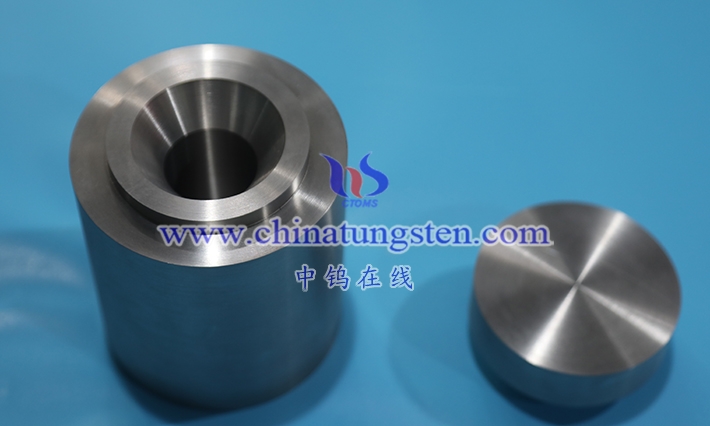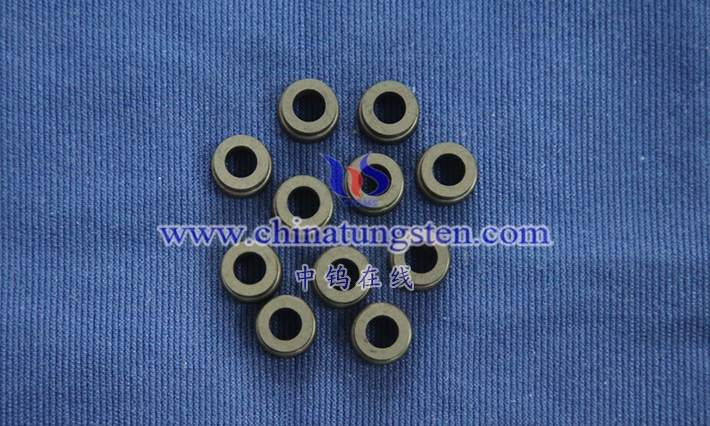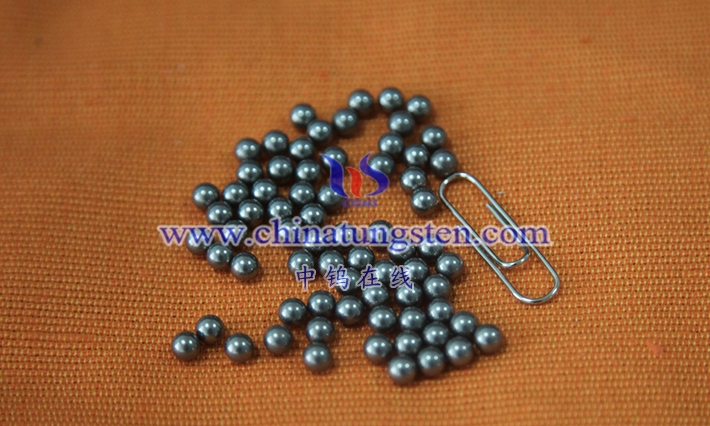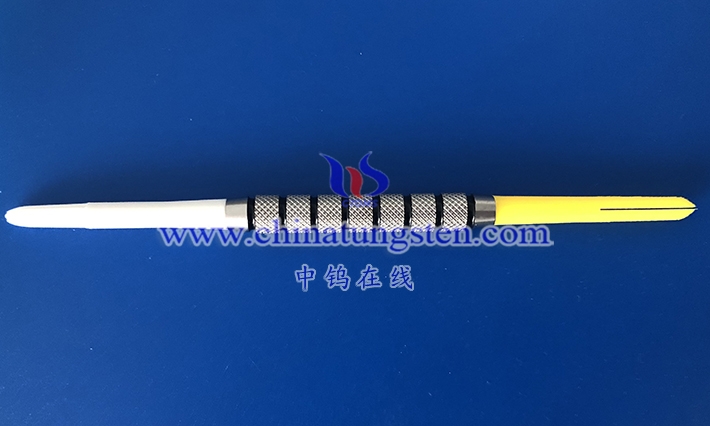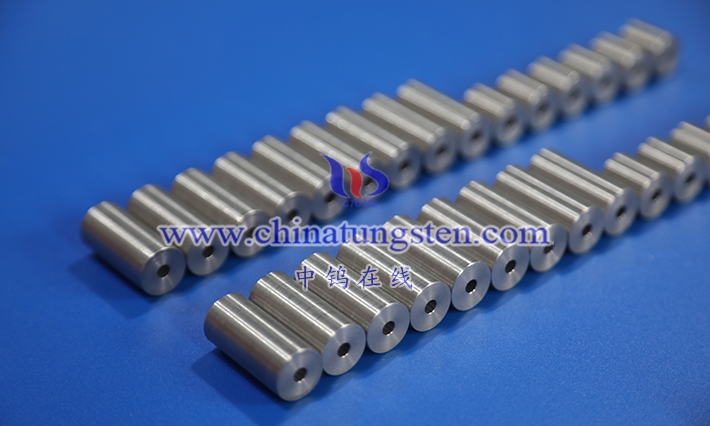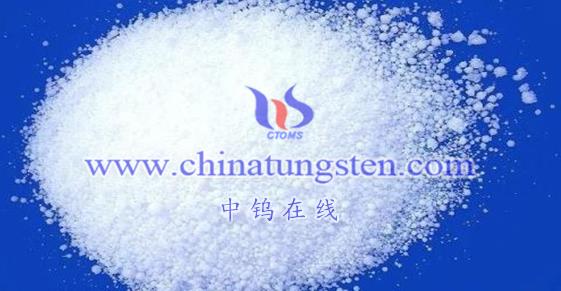
What Are the Chemicals of Tungsten?
Contents
Chapter 1
Overview of Tungsten
1.1 Discovery and History of Tungsten
1.1.1 Brief History of Discovery
1.1.1.1 Initial Discovery by Swedish Chemist Cronstedt (1755, Swedish Literature)
1.1.1.2 Scheele’s Isolation of Tungstic Acid (1781, German Literature)
1.1.1.3 Elhuyar Brothers’ Purification of Tungsten Metal (1783, Spanish Literature)
1.1.2 Naming and Multilingual Designations of Tungsten
1.1.3 Early Industrial Applications (19th Century, English and French Literature)
1.2 Natural Occurrence of Tungsten
1.2.1 Types and Distribution of Global Tungsten Minerals
1.2.1.1 Wolframite
1.2.1.2 Scheelite
1.2.1.3 Other Minor Tungsten Minerals (e.g., Hübnerite)
1.2.2 Major Producing Countries and Reserves
1.2.2.1 China (Approximately 60% of Global Reserves)
1.2.2.2 Russia, Vietnam, Canada, Australia, and Others
1.2.3 Major Tungsten Mining Regions
Russian Far East
Other Regions
1.3 Physical and Chemical Properties of Tungsten
1.3.1 Physical Properties (Melting Point 3410°C, Density 19.25 g/cm³)
1.3.2 Chemical Properties (Oxidation States +2 to +6, Corrosion Resistance)
1.3.3 Property Descriptions in Multilingual Literature (Russian, Japanese, Arabic, etc.)
1.4 Industrial and Scientific Value of Tungsten Chemicals
1.4.1 Global Industrial Demand Overview
1.4.2 Scientific Significance
Sources of Information
References
Chapter 2
Basic Classification and Characteristics of Tungsten Chemicals
2.1 Classification of Tungsten Chemicals
2.1.1 Oxides of Tungsten
Tungsten trioxide (WO₃, Tungsten Trioxide)
Tungsten dioxide (WO₂, Tungsten Dioxide)
Ditungsten pentoxide (W₂O₅, Ditungsten Pentoxide)
Tungsten blue oxide (W₁₈O₄₉ or W₂₀O₅₈, Tungsten Blue Oxide)
2.1.2 Tungstic Acid and Tungstates
Tungstic acid (H₂WO₄, Tungstic Acid) and its salts, known as tungstates, are critical Tungstic acid (H₂WO₄, Tungstic Acid)
Sodium tungstate (Na₂WO₄, Sodium Tungstate)
Ammonium paratungstate (APT, (NH₄)₂WO₄, Ammonium Paratungstate)
Ammonium metatungstate ((NH₄)₆H₂W₁₂O₄₀, Ammonium Metatungstate)
Calcium tungstate (CaWO₄, Calcium Tungstate)
2.1.3 Halides of Tungsten
Tungsten hexachloride (WCl₆, Tungsten Hexachloride)
Tungsten hexafluoride (WF₆, Tungsten Hexafluoride)
2.1.4 Carbides and Nitrides
Tungsten carbide powder (WC, Tungsten Carbide Powder)
Ditungsten carbide (W₂C, Ditungsten Carbide)
Tungsten nitride (WN, Tungsten Nitride)
2.1.5 Sulfides and Phosphides
Tungsten disulfide (WS₂, Tungsten Disulfide)
Tungsten phosphide (WP, Tungsten Phosphide)
2.1.6 Organotungsten Compounds
Tungsten hexacarbonyl (W(CO)₆, Tungsten Hexacarbonyl)
2.1.7 Tungsten-Containing Catalysts and Reagents
Phosphotungstic acid (H₃PW₁₂O₄₀, Phosphotungstic Acid)
2.1.8 Tungsten-Containing Pharmaceutical Chemicals
Sodium tungstate nanoparticles
(Na₂WO₄ Nanoparticles, Sodium Tungstate Nanoparticles)
2.1.9 Other Tungsten-Containing Non-Metallic Compounds
Tungsten diselenide (WSe₂, Tungsten Diselenide)
2.2 Basic Characteristics of Tungsten Chemicals
2.2.1 Crystal Structure and Molecular Composition
2.2.2 Thermal and Chemical Stability
2.2.3 Optical, Electrical, and Magnetic Properties
Sources of Information
References
Chapter 3
Preparation and Applications of Tungsten Oxides
3.1 Tungsten Trioxide (WO₃, Tungsten Trioxide)
3.1.1 Preparation Processes
Calcination Method (High-Temperature Oxidative Decomposition)
Wet Chemical Precipitation Method (Acidification Extraction)
Chemical Vapor Deposition (CVD) Technique
3.1.2 Crystal Structure and Molecular Composition
3.1.3 Thermal and Chemical Stability
3.1.4 Optical, Electrical, and Magnetic Properties
3.2 Tungsten Dioxide (WO₂, Tungsten Dioxide)
3.2.1 Preparation Processes
Hydrogen Reduction Method
Thermal Decomposition Method
3.2.2 Crystal Structure and Molecular Composition
3.2.3 Thermal and Chemical Stability
3.2.4 Optical, Electrical, and Magnetic Properties
3.3 Other Tungsten Oxides
3.3.1 Preparation Processes
Oxidation Method for Ditungsten Pentoxide
(W₂O₅, Ditungsten Pentoxide)
High-Temperature Reduction for Tungsten Blue Oxide Variant
(W₁₈O₄₉, Tungsten Blue Oxide Variant)
3.3.2 Crystal Structure and Molecular Composition
3.3.3 Thermal and Chemical Stability
3.3.4 Optical, Electrical, and Magnetic Properties
Sources of Information
References
Chapter 4
Preparation and Applications of Tungstic Acid and Tungstates
4.1 Tungstic Acid (H₂WO₄, Tungstic Acid)
4.1.1 Preparation Processes
Acid Precipitation Method (Ore Leaching)
Tungstate Acidolysis Method (Solution Conversion)
Ion Exchange Method (High-Purity Preparation)
4.1.2 Crystal Structure and Molecular Composition
4.1.3 Thermal and Chemical Stability
4.1.4 Optical, Electrical, and Magnetic Properties
4.2 Sodium Tungstate (Na₂WO₄, Sodium Tungstate)
4.2.1 Preparation Processes
Alkaline Fusion Method (Ore Extraction)
Tungstic Acid Neutralization Method (Laboratory Preparation)
4.2.2 Crystal Structure and Molecular Composition
4.2.3 Thermal and Chemical Stability
4.2.4 Optical, Electrical, and Magnetic Properties
4.3 Other Tungstates
4.3.1 Preparation Processes
Ion Exchange and Crystallization for Ammonium Paratungstate
(APT, (NH₄)₂WO₄, Ammonium Paratungstate)
Fusion Reaction for Calcium Tungstate
(CaWO₄, Calcium Tungstate)
Acidification Polymerization for Ammonium Metatungstate
((NH₄)₆H₂W₁₂O₄₀, Ammonium Metatungstate)
4.3.2 Crystal Structure and Molecular Composition
4.3.3 Thermal and Chemical Stability
4.3.4 Optical, Electrical, and Magnetic Properties
Sources of Information
References
Chapter 5
Preparation and Applications of Tungsten Halides
5.1 Tungsten Hexachloride (WCl₆, Tungsten Hexachloride)
5.1.1 Preparation Processes
Direct Chlorination Method (Tungsten Metal Chlorination)
Chlorine Reduction Method (Oxide Chlorination)
Gas-Phase Reaction Method (High-Purity Preparation)
5.1.2 Crystal Structure and Molecular Composition
5.1.3 Thermal and Chemical Stability
5.1.4 Optical, Electrical, and Magnetic Properties
5.2 Tungsten Hexafluoride (WF₆, Tungsten Hexafluoride)
5.2.1 Preparation Processes
Direct Fluorination Method (Tungsten and Fluorine Reaction)
Oxide Fluorination Method (Tungsten Trioxide Fluorination)
5.2.2 Crystal Structure and Molecular Composition
5.2.3 Thermal and Chemical Stability
5.2.4 Optical, Electrical, and Magnetic Properties
5.3 Other Tungsten Halides
5.3.1 Preparation Processes
Reduction Chlorination Method for Tungsten Tetrachloride
(WCl₄, Tungsten Tetrachloride)
Controlled Chlorination Method for Tungsten Pentachloride
(WCl₅, Tungsten Pentachloride)
5.3.2 Crystal Structure and Molecular Composition
5.3.3 Thermal and Chemical Stability
5.3.4 Optical, Electrical, and Magnetic Properties
Sources of Information
References
Chapter 6
Preparation and Applications of Tungsten Carbides and Nitrides
6.1 Tungsten Carbide (WC, Tungsten Carbide)
6.1.1 Preparation Processes
High-Temperature Carbonization Method (Tungsten Powder Carbonization)
Gas-Phase Carbonization Method (Chemical Vapor Reaction)
Plasma Synthesis Method (Ultrafine Particle Preparation)
6.1.2 Crystal Structure and Molecular Composition
6.1.3 Thermal and Chemical Stability
6.1.4 Optical, Electrical, and Magnetic Properties
6.2 Tungsten Nitride (WN, Tungsten Nitride)
6.2.1 Preparation Processes
High-Temperature Nitridation Method (Tungsten Powder Nitridation)
Gas-Phase Deposition Method (CVD or PVD)
6.2.2 Crystal Structure and Molecular Composition
6.2.3 Thermal and Chemical Stability
6.2.4 Optical, Electrical, and Magnetic Properties
6.3 Other Tungsten Carbides and Nitrides
6.3.1 Preparation Processes
Controlled Carbonization Method for Ditungsten Carbide
(W₂C, Ditungsten Carbide)
Carbon-Nitrogen Co-Diffusion Method for Tungsten Carbonitride
(WC₁₋ₓNₓ, Tungsten Carbonitride)
6.3.2 Crystal Structure and Molecular Composition
6.3.3 Thermal and Chemical Stability
6.3.4 Optical, Electrical, and Magnetic Properties
Sources of Information
References
Chapter 7
Preparation and Applications of Tungsten Sulfides & Phosphides
7.1 Tungsten Disulfide (WS₂, Tungsten Disulfide)
7.1.1 Preparation Processes
High-Temperature Sulfidation Method (Tungsten Powder Sulfidation)
Chemical Vapor Deposition Method (CVD)Mechanical Exfoliation Method
(Nanosheet Preparation)
7.1.2 Crystal Structure and Molecular Composition
7.1.3 Thermal and Chemical Stability
7.1.4 Optical, Electrical, and Magnetic Properties
7.2 Tungsten Phosphide (WP, Tungsten Phosphide)
7.2.1 Preparation Processes
High-Temperature Phosphidation Method (Tungsten Powder Phosphidation)
Chemical Reduction Method (Oxide Phosphidation)
7.2.2 Crystal Structure and Molecular Composition
7.2.3 Thermal and Chemical Stability
7.2.4 Optical, Electrical, and Magnetic Properties
7.3 Other Tungsten Sulfides and Phosphides
7.3.1 Preparation Processes
Controlled Sulfidation Method for Ditungsten Trisulfide
(W₂S₃, Ditungsten Trisulfide)
High-Temperature Phosphidation Method for Tungsten Diphosphide
(WP₂, Tungsten Diphosphide)
7.3.2 Crystal Structure and Molecular Composition
7.3.3 Thermal and Chemical Stability
7.3.4 Optical, Electrical, and Magnetic Properties
Sources of Information
References
Chapter 8
Preparation & Applications of Organometallic Tungsten Compounds
8.1 Tungsten Hexacarbonyl (W(CO)₆, Tungsten Hexacarbonyl)
8.1.1 Preparation Processes
High-Pressure Carbonylation Method (Tungsten Powder Carbonylation)
Reductive Carbonylation Method (Halide Reduction)
Gas-Phase Synthesis Method (High-Purity Preparation)
8.1.2 Crystal Structure and Molecular Composition
8.1.3 Thermal and Chemical Stability
8.1.4 Optical, Electrical, and Magnetic Properties
8.2 Tungstenocene Dichloride (Cp₂WCl₂, Tungstenocene Dichloride)
8.2.1 Preparation Processes
Halide Coordination Method (Tungsten Hexachloride Reaction)
Reductive Coordination Method (Tungsten Trioxide Substrate)
8.2.2 Crystal Structure and Molecular Composition
8.2.3 Thermal and Chemical Stability
8.2.4 Optical, Electrical, and Magnetic Properties
8.3 Other Organometallic Tungsten Compounds
8.3.1 Preparation Processes
Carbonyl Coordination Method for Tungstenocene Tetracarbonyl
(CpW(CO)₄, Tungstenocene Tetracarbonyl)
Alkylation Method for Hexamethyltungsten
(W(CH₃)₆, Hexamethyltungsten)
8.3.2 Crystal Structure and Molecular Composition
8.3.3 Thermal and Chemical Stability
8.3.4 Optical, Electrical, and Magnetic Properties
Sources of Information
References
Chapter 9
Preparation & Applications of Tungsten-Containing Catalysts & Reagents
9.1 Phosphotungstic Acid (H₃PW₁₂O₄₀, Phosphotungstic Acid)
9.1.1 Preparation Processes
Acid Precipitation Method (Tungstate Reaction)
Extraction Purification Method (Solution Extraction)
Ion Exchange Method (High-Purity Preparation)
9.1.2 Crystal Structure and Molecular Composition
9.1.3 Thermal and Chemical Stability
9.1.4 Optical, Electrical, and Magnetic Properties
9.2 Silicotungstic Acid (H₄SiW₁₂O₄₀, Silicotungstic Acid)
9.2.1 Preparation Processes
Acid Reaction Method (Sodium Silicate and Tungstate Reaction)
Extraction Method (Solution Purification)
9.2.2 Crystal Structure and Molecular Composition
9.2.3 Thermal and Chemical Stability
9.2.4 Optical, Electrical, and Magnetic Properties
9.3 Other Tungsten-Containing Catalysts and Reagents
9.3.1 Preparation Processes
Solid-Phase Reaction Method for Zinc Tungstate (ZnWO₄, Zinc Tungstate)
Neutralization Method for Ammonium Tungstate ((NH₄)₂WO₄, Ammonium Tungstate)
9.3.2 Crystal Structure and Molecular Composition
9.3.3 Thermal and Chemical Stability
Sources of Information
References
Chapter 10
Preparation & Applications of Tungsten-Containing Pharmaceutical Chemicals
10.1 Sodium Tungstate Nanoparticles
(Na₂WO₄ Nanoparticles, Sodium Tungstate Nanoparticles)
10.1.1 Preparation Processes
Solution Precipitation Method(Sodium Tungstate Precipitation)
Microemulsion Method (Particle Size Control)
Solvothermal Method (High-Purity Preparation)
10.1.2 Crystal Structure and Molecular Composition
10.1.3 Thermal and Chemical Stability
10.1.4 Optical, Electrical, and Magnetic Properties
10.2 Polyoxotungstate Nanoparticles (Polyoxotungstate Nanoparticles)
10.2.1 Preparation Processes
Solution Polymerization Method (Tungstate Polymerization)
Nanoemulsion Method (Particle Size Control)
10.2.2 Crystal Structure and Molecular Composition
10.2.3 Thermal and Chemical Stability
10.2.4 Optical, Electrical, and Magnetic Properties
10.3 Other Tungsten-Containing Pharmaceutical Chemicals
10.3.1 Preparation Processes
Precipitation Method for Calcium Tungstate Nanoparticles
(CaWO₄ Nanoparticles, Calcium Tungstate Nanoparticles)
Tungsten trioxide nanoparticles
10.3.2 Crystal Structure and Molecular Composition
Calcium Tungstate Nanoparticles
10.3.3 Thermal and Chemical Stability
Calcium Tungstate Nanoparticles
10.3.4 Optical, Electrical, and Magnetic Properties
Calcium Tungstate Nanoparticles
Sources of Information
References
Chapter 11
Preparation and Applications of
Other Tungsten-Containing Non-Metallic Compounds
11.1 Tungsten Diselenide (WSe₂, Tungsten Diselenide)
11.1.1 Preparation Processes
High-Temperature Selenization Method (Tungsten Powder Selenization)
Chemical Vapor Deposition Method (CVD)
Mechanical Exfoliation Method (Monolayer Preparation)
11.1.2 Crystal Structure and Molecular Composition
11.1.3 Thermal and Chemical Stability
11.1.4 Optical, Electrical, and Magnetic Properties
11.2 Tungsten Ditelluride (WTe₂, Tungsten Ditelluride)
11.2.1 Preparation Processes
High-Temperature Tellurization Method (Tungsten Powder Tellurization)
Chemical Vapor Deposition Method (CVD)
11.2.2 Crystal Structure and Molecular Composition
11.2.3 Thermal and Chemical Stability
11.2.4 Optical, Electrical, and Magnetic Properties
11.3 Other Tungsten-Containing Non-Metallic Compounds
11.3.1 Preparation Processes
Iodination Method for Tungsten Diiodide
(WI₂, Tungsten Diiodide)
Bromination Method for Tungsten Dibromide
(WBr₂, Tungsten Dibromide)
11.3.2 Crystal Structure and Molecular Composition
11.3.3 Thermal and Chemical Stability
11.3.4 Optical, Electrical, and Magnetic Properties
Sources of Information
References
Chapter 12
Environmental Impact and Recycling of Tungsten Chemicals
12.1 Overview of the Environmental Impact of Tungsten Chemicals
12.1.1 Environmental Impact of Mining and Production
12.1.2 Environmental Impact of Use and Disposal
12.1.3 Environmental Regulations and Management
12.2 Recycling Technologies for Tungsten Chemicals
12.2.1 Hydrometallurgical Recycling Technology
12.2.2 Pyrometallurgical Recycling Technology
12.2.3 Electrochemical Recycling Technology
12.3 Applications of Recycled Tungsten Chemicals
12.3.1 Industrial Reuse
12.3.2 Scientific Research and Emerging Fields
12.3.3 Environmental Benefits
References
Chapter 13
Addendum
Comprehensive Omissions and Expansions of Tungsten Chemicals
13.1 Comprehensive Overview of Omitted Tungsten Chemicals
13.1.1 Identification and Background of Omitted Compounds
13.1.2 Methodology for Compound Inference and Validation
13.2 Tungsten Disilicide (WSi₂, Tungsten Disilicide)
13.2.1 Preparation Processes
High-Temperature Silicidation Method
Chemical Vapor Deposition Method (CVD)
13.2.2 Crystal Structure and Molecular Composition
13.2.3 Thermal and Chemical Stability
13.2.4 Optical, Electrical, and Magnetic Properties
13.2.5 Applications and Background
13.3 Tungsten Boride (WB, Tungsten Boride)
13.3.1 Preparation Processes
High-Temperature Boridation Method
Plasma Synthesis Method
13.3.2 Crystal Structure and Molecular Composition
13.3.3 Thermal and Chemical Stability
13.3.4 Optical, Electrical, and Magnetic Properties
13.3.5 Applications and Background
13.4 Other Omitted and Inferred Compounds
13.4.1 Tungsten Dicyanide (W(CN)₂, Tungsten Dicyanide)
13.4.2 Tungsten Digermanide (WGe₂, Tungsten Digermanide)
13.4.3 Tungsten Diarsenide (WAs₂, Tungsten Diarsenide)
13.4.4 Tungsten Molybdate (WMoO₄, Tungsten Molybdate)
13.4.5 Validation and Verification
Sources of Information
References
Appendix
List of Tungsten Chemicals and Compounds Featured in the Book
- Tungsten Oxides
- Tungstic Acids and Tungstates
- Halides of Tungsten
- Carbides and Nitrides
- Sulfides and Phosphides of Tungsten
- Selenides and Tellurides of Tungsten
- Silicides and Germanides of Tungsten
- Borides and Arsenides of Tungsten
- Organometallic Compounds of Tungsten
- Tungsten-Containing Catalysts and Reagents of Tungsten
- Tungsten-Containing Pharmaceutical Chemicals of Tungsten
Chapter 14:
Safety in the Production and Use of Tungsten
14.1 Safety Standards in Tungsten Chemical Production
14.1.1 Risk Assessment in the Production Process
14.1.1.1 Risks of High-Temperature and High-Pressure Operations
Mitigation Measures
14.1.1.2 Control of Toxic Gas Emissions
Mitigation Measures
14.1.2 Safety Equipment and Protective Measures
14.1.2.1 Ventilation and Explosion-Proof Facilities
Implementation Recommendations
14.1.2.2 Personal Protective Equipment (PPE)
Precautions
14.1.3 International Safety Standards and Regulations
14.1.3.1 OSHA and ECHA Standards
Compliance Tips
14.1.3.2 Chinese Safety Production Standards
Implementation Tips
Tip
14.2 Safety Management in the Use of Tungsten Chemicals
14.2.1 Safety Guidelines for Industrial Use
14.2.1.1 Storage and Transportation Requirements
Procedure
14.2.1.2 Waste Management and Spill Response
Emergency Protocol
14.2.2 Safety Precautions in Laboratory Use
14.2.2.1 Reagent Handling and Waste Management
Safety Tips
14.2.3 Biological Safety in Medical Applications
14.2.3.1 Toxicity Assessment of Tungstate Drugs
Safety Procedures
Tip
14.3 Typical MSDS Samples for Key Tungsten Chemicals
14.3.1 Tungsten Trioxide (WO₃, Tungsten Trioxide) MSDS
14.3.1.1 Chemical Identification and Composition
14.3.1.2 Hazard Overview
14.3.1.3 Handling and Storage Requirements
14.3.1.4 Emergency Measures
14.3.2 Tungsten Carbide (WC, Tungsten Carbide) MSDS
14.3.2.1 Chemical Identification and Composition
14.3.2.2 Hazard Overview
14.3.2.3 Handling and Storage Requirements
14.3.2.4 Emergency Measures
14.3.3 Sodium Tungstate (Na₂WO₄, Sodium Tungstate) MSDS
14.3.3.1 Chemical Identification and Composition
14.3.3.2 Hazard Overview
14.3.3.3 Handling and Storage Requirements
14.3.3.4 Emergency Measures
14.3.4 Tungsten Hexafluoride (WF₆, Tungsten Hexafluoride) MSDS
14.3.4.1 Chemical Identification and Composition
14.3.4.2 Hazard Overview
14.3.4.3 Handling and Storage Requirements
14.3.4.4 Emergency Measures
14.3.5 MSDS Samples for Other Key Tungsten Chemicals (e.g., APT, WS₂)
Reference Tip
14.4 Future Developments in Tungsten Chemical Safety Technology
14.4.1 AI Applications in Safety Production
14.4.2 Trends in Green Safety Technology
Outlook
Sources of Information
References
Chemical Safety Manual OSHA, Washington, D.C.
Latest Edition
- Introduction and Purpose
Objective
Scope
Legal Basis
- Definition and Identification of Hazardous Chemicals
Definition
Identification
Example
- Risk Assessment and Control Measures
High-Temperature and High-Pressure Risks
Controls
Toxic Gas Emissions
Controls
Evaluation Methods
- Labeling and Safety Data Sheets (SDS)
Labeling Requirements:
SDS Forma
Example
- Employee Training and Education
Content
Frequency
Example
- Emergency Response and Incident Management
Spill Response:
First Aid:
Reporting
- Compliance and Inspections
Requirements
Penalties
Example
Tungsten-Specific Examples
Tungsten Trioxide (WO₃)
Tungsten Hexafluoride (WF₆)
Tungsten Chemical MSDS (Multilingual) ECHA, Helsinki
Latest Edition
- Identification of the Substance/Mixture and Company/Undertaking
- Hazards Identification
- Composition/Information on Ingredients
- First-Aid Measures
- Fire-Fighting Measures
- Accidental Release Measures
- Handling and Storage
- Exposure Controls/Personal Protection
- Physical and Chemical Properties
- Stability and Reactivity
- Toxicological Information
- Ecological Information
- Disposal Considerations
- Transport Information
- Regulatory Information
- Other Information
Additional Tungsten Chemical MSDS Examples
(Abbreviated)
Tungsten Carbide (WC)
Sodium Tungstate (Na₂WO₄)
Tungsten Hexafluoride (WF₆)
Chapter 15
Control and Taxation Policies on the Tungsten Industry
Worldwide, with a Focus on China,
Including Europe, the United States, Japan & South Korea
15.1 Overview of Tungsten Industry Policies
15.1.1 Global Strategic Importance of the Tungsten Industry
15.1.2 Policy Objectives and Key Differences Across Countries
China
United States
European Union
Japan and South Korea
15.2 Exploration and Mining Policies
15.2.1 China’s Exploration and Mining Policies
Exploration Policies
Mining Policies
Regulatory Enforcement and Case Study
Environmental Requirements
15.2.2 Exploration and Mining Policies in Europe and the United States
United States
European Union:
15.2.3 Exploration and Mining Policies in Japan and South Korea
Japan
South Korea
15.3 Smelting and Production Processing Policies
15.3.1 China’s Smelting and Production Processing Policies
15.3.2 Smelting and Production Processing Policies in Europe and the United States
United States
European Union
15.3.3 Smelting and Production Processing Policies in Japan and South Korea
Japan
South Korea
15.4 Import and Export Policies and Controls
15.4.1 China’s Import and Export Policies
Export Control Policies
Specific Measures
Dual-Use Item Regulations
Import Policies
Tariff Policies
Additional Details
15.4.2 Import and Export Policies in Europe and the United States
United States
European Union
15.4.3 Import and Export Policies in Japan and South Korea
Japan
South Korea
15.5 Taxation Policies
15.5.1 China’s Taxation Policies
15.5.2 Taxation Policies in Europe and the United States
United States
European Union
15.5.3 Taxation Policies in Japan and South Korea
Japan
South Korea
Sources of Information
References
List of Tungsten Products Subject to Export Controls under the Export Control List of Dual-Use Items and Technologies of the People’s Republic of China
Tungsten Products Export Control List
The Administrative Measures for Export Licenses of Dual-Use Items and Technologies HS
Appendix: Main Industrial Standards For Tungsten Chemicals
Major Industrial Standards for Tungsten Chemicals and Compounds in US
- ASTM D7047-15 (Standard Test Method for Analysis of Tungstates)
- ASTM E236-66 (2017) (Standard Specification for Chemical Analysis of Tungsten)
- OSHA PEL (29 CFR 1910.1000) Occupational Exposure Limits
Main industrial standards for tungsten chemicals and compounds in the EU
- EN 10204:2004 Metallic Products – Types of Inspection Documents
- REACH Annex XVII (EC 1907/2006) Registration and Restriction of Tungsten
Main industrial standards for tungsten chemicals and compounds in Japan
- JIS H 1404:2001 (Methods for Chemical Analysis of Tungsten)
- JIS K 8962:2008 (Sodium Tungstate)
Main industrial standards for tungsten chemicals and compounds in South Korea
- KS M 6891:2018 (Tungsten Oxides)
- KS M 6893:2018 (Tungstates)
International Major Industrial Standards for Tungsten Chemicals and Compounds
- ISO 11876:2010 Determination of Oxygen Content in Tungsten Powder
- ISO 6892-1:2016 Metallic Materials – Chemical Analysis
Supplemental Notes
Data Sources:
Global Perspective:
China’s Tungsten Chemical and Compound Standards
- GB/T 10116-2007 Tungsten Trioxide
- GB/T 23365-2009 Ammonium Paratungstate (APT)
- HG/T 2959-2010 Sodium Tungstate
- HG/T 2469-2010 Tungstic Acid
- GBZ 2.1-2019 Occupational Exposure Limits for Hazardous Substances in Workplace
日本タングステン化学品及び化合物の主要工業規格
- JIS H 1404:2001 タングステン化学品の分析
(Methods for Chemical Analysis of Tungsten)
- JIS K 8962:2008 タングステン酸ナトリウム (Sodium Tungstate)
韓国タングステン化学品および化合物主要産業基準 (Translated into Korean)
- KS M 6891:2018 텅스텐 산화물 (Tungsten Oxides)
- KS M 6893:2018 텅스텐산염 (Tungstates)
List of Tungsten-Containing Compounds:
CAS Numbers, Chemical Formulas, & Properties
- Oxides of Tungsten
2.Tungstic Acids and Tungstates
- Halides of Tungsten
- Sulfides and Selenides of Tungsten
- Tellurides of Tungsten
- Silicides
- Arsenides of Tungsten
- Organometallic Compounds
- Tungsten-Containing Catalysts and Reagents
List of Equipment, Specifications, Function Descriptions,
Advantages, & Disadvantages
for Tungsten Chemical Production
1.Ore Processing and Pretreatment Equipment
- Smelting and Chemical Reaction Equipment
- Refining and Separation Equipment
- Drying and Post-Processing Equipment
- Auxiliary and Environmental Equipment
Sources of Information
Sources: Chemical Safety Handbook (English, OSHA), MSDS Guide for Tungsten Chemicals (Multilingual, ECHA), Safety Production Technology (Chinese, Chinatungsten Online)
Major Producers: China Minmetals, H.C. Starck (Germany), Kennametal (USA)
Appendix
A. Major Industrial Standards for Tungsten Chemicals
B. Table of Chemical Formulas and Properties of Tungsten-Containing Compounds
C. Specifications of Equipment for Tungsten Chemical Production
References
The History and Applications of Tungsten (Swedish) – KTH Royal Institute of Technology, Stockholm, 1990
A Brief History of Tungsten Chemistry (English) – U.S. Geological Survey (USGS), Washington, D.C., 2005
Fundamentals of Tungsten Chemistry (German) – H.C. Starck GmbH, Munich, 1998
Properties of Tungsten Compounds (Russian) – Department of Chemistry, Moscow State University, Moscow, 2000
Chemistry of Tungstates (French) – Institute of Chemistry, University of Paris, Paris, 1995
Optical Properties of Tungsten (Japanese) – Toshiba Corporation Research Report, Tokyo, 2010
Studies on Tungsten Halides (Japanese) – Toshiba Chemical Research Institute, Tokyo, 2008
Industrial Applications of WF₆ (Korean) – Samsung Electronics Research Institute, Seoul, 2015
Industrial History of WC (German) – Krupp AG, Essen, 1985
Organotungsten Chemistry (English) – Massachusetts Institute of Technology (MIT), Boston, 2002
Studies on Tungsten Catalysts (Russian) – Moscow Institute of Chemical Technology, Moscow, 2012
Pharmaceutical Applications of Tungsten (English) – National Institutes of Health (NIH), Bethesda, 2018
Tungsten Chemical Industry (Chinese) – Chinatungsten Online Editorial Department, Beijing, 2020
Industrial Applications of APT (Chinese) – China Tungsten Industry Association (CTIA), Beijing, 2019
Environmental Technologies in Tungsten Industry (Chinese) – China Tungsten Industry Association (CTIA), Beijing, 2021
Global Tungsten Recycling (English) – International Tungsten Industry Association (ITIA), London, 2020
Chemical Safety Handbook (English) – Occupational Safety and Health Administration (OSHA), Washington, D.C., 2015
MSDS Guide for Tungsten Chemicals (Multilingual) – European Chemicals Agency (ECHA), Helsinki, 2020
Safety Production Technology (Chinese) – Chinatungsten Online Editorial Department, Beijing, 2022
Non-Metallic Tungsten Compounds (Chinese) – Chinatungsten Online, Beijing, 2021
Websites
Chinatungsten Online: www.chinatungsten.com
China Tungsten Industry Association: www.ctia.com.cn
Chinatungsten Online WeChat Public Account: “Chinatungsten Online”
USGS Mineral Resources: www.usgs.gov
Chapter 1: Overview of Tungsten
1.1 Discovery and History of Tungsten
Tungsten (W, Tungsten) (element symbol W) has a discovery and research history spanning several centuries, evolving from early unconscious use to systematic scientific exploration, reflecting humanity’s gradual understanding of this high-melting-point metal. The following are the key milestones and events in the discovery and historical development of tungsten (W, Tungsten).
1.1.1 Brief History of Discovery
The discovery of tungsten (W, Tungsten) was not instantaneous but involved a prolonged process from mineral recognition to elemental isolation.
1.1.1.1 Initial Discovery by Swedish Chemist Cronstedt (1755, Swedish Literature)
In 1755, Swedish mineralogist Axel Fredrik Cronstedt, while studying the iron ore at Bispberg, Sweden, identified an unusually heavy white mineral. He named it “tungsten” (Swedish for “heavy stone”), later known as scheelite (CaWO₄, Scheelite). Cronstedt did not isolate the tungsten (W, Tungsten) element, but he noted the mineral’s density far exceeded that of common minerals, recording its properties for the first time in Swedish literature [1]. This discovery marked the beginning of tungsten (W, Tungsten) entering the scientific domain.
Tip
At this time, “tungsten” referred solely to the mineral and was not recognized as containing a new element, with its chemical properties still unknown.
1.1.1.2 Scheele’s Isolation of Tungstic Acid (1781, German Literature)
In 1781, the renowned Swedish chemist Carl Wilhelm Scheele conducted an in-depth analysis of scheelite (CaWO₄, Scheelite). Using acid treatment (nitric acid), he extracted a white powdery substance from the mineral, which he named [tungstic acid (H₂WO₄, Tungstic Acid)](tungstic acid). Scheele detailed its chemical reaction properties in German literature and speculated it might be linked to an unknown metal [2]. His mentor, Torbern Bergman, suggested reducing tungstic acid (H₂WO₄, Tungstic Acid) with charcoal to produce the metal, but this was not achieved due to technological limitations.
Key Figure
Scheele, renowned for his exceptional chemical separation techniques, laid the groundwork for the eventual discovery of tungsten (W, Tungsten).
Tip
Tungstic acid (H₂WO₄, Tungstic Acid) became a crucial starting point for tungsten (W, Tungsten) chemical research, later serving as a key intermediate in producing other tungsten chemicals, such as tungsten trioxide.
1.1.1.3 Elhuyar Brothers’ Purification of Tungsten Metal (1783, Spanish Literature)
In 1783, Spanish chemists Juan José Elhuyar and Fausto Elhuyar completed the isolation of tungsten (W, Tungsten) at the Vergara Seminary. They extracted tungstic acid (H₂WO₄, Tungstic Acid) from wolframite ((Fe,Mn)WO₄, Wolframite) and successfully reduced it with charcoal at high temperatures to produce metallic tungsten (W, Tungsten) powder. They named it “wolfram” in Spanish literature, derived from the German miners’ term “wolf foam” for wolframite ((Fe,Mn)WO₄, Wolframite), due to its interference with tin smelting [3].
Key Figures
The Elhuyar brothers, pioneers in mineralogy and chemistry, formally established tungsten (W, Tungsten) as a distinct element.
Country
Spain holds a significant place in the history of tungsten (W, Tungsten) discovery.
Tip
This marked the first isolation of metallic tungsten (W, Tungsten), initiating the history of its applied research.
1.1.2 Naming and Multilingual Designations of Tungsten
The naming of tungsten (W, Tungsten) reflects its multicultural discovery. The Swedish term “tungsten” (heavy stone) originates from Cronstedt’s description, emphasizing its high density, while the German and Spanish “wolfram” was coined by the Elhuyar brothers, rooted in the historical name of wolframite ((Fe,Mn)WO₄, Wolframite). Today, “tungsten” is the English and internationally accepted name (element symbol W), while “wolfram” remains widely used in German, Spanish, and other European languages. In Chinese, “钨” (tungsten) combines “金” (metal) and “乌” (black), symbolizing its metallic nature and dark appearance [4].
Tip
The multilingual naming variations highlight the international nature of tungsten (W, Tungsten) discovery, and procurement managers should be familiar with these terms for effective supplier communication in global trade.
1.1.3 Early Industrial Applications (19th Century, English and French Literature)
In the early 19th century, as the Industrial Revolution progressed, the properties of tungsten (W, Tungsten) began to gain recognition. In 1841, British chemist Robert Dickinson Oxland patented the production of [sodium tungstate (Na₂WO₄, Sodium Tungstate)](sodium tungstate), tungstic acid (H₂WO₄, Tungstic Acid), and tungsten (W, Tungsten) metal, marking an initial step toward industrializing tungsten (W, Tungsten) chemicals [5]. By 1847, sodium tungstate (Na₂WO₄, Sodium Tungstate) was used in dyeing cotton fabrics and fireproofing theatrical costumes, becoming one of the earliest industrial applications of tungsten (W, Tungsten) chemicals. These early efforts were documented in English and French literature, illustrating tungsten (W, Tungsten)’s transition from the laboratory to industry [6].
Tip
19th-century industrial applications laid the foundation for the commercialization of tungsten (W, Tungsten), particularly in the chemical sector, with uses like sodium tungstate (Na₂WO₄, Sodium Tungstate) for fireproofing still relevant today.
1.2 Natural Occurrence of Tungsten
Tungsten (W, Tungsten) primarily exists in nature as minerals, and its distribution and extraction are critical to the industrial production of tungsten (W, Tungsten) chemicals.
1.2.1 Types and Distribution of Global Tungsten Minerals
Tungsten (W, Tungsten) minerals are diverse, primarily including the following:
1.2.1.1 Wolframite
Wolframite ((Fe,Mn)WO₄, Wolframite) is an iron-manganese tungstate with a black or dark brown appearance, serving as one of the primary ores of tungsten (W, Tungsten). Named “wolfram,” it earned the nickname “wolf foam” from German miners due to the foam it produced during tin smelting.
1.2.1.2 Scheelite
Scheelite (CaWO₄, Scheelite) is calcium tungstate, appearing white or pale yellow, and was dubbed “heavy stone” by Swedes due to its high density. It fluoresces blue under ultraviolet light and is commonly used to extract tungstic acid (H₂WO₄, Tungstic Acid).
1.2.1.3 Other Minor Tungsten Minerals (e.g., Hübnerite)
Other tungsten (W, Tungsten) minerals include hübnerite (MnWO₄, Hübnerite) and ferberite (FeWO₄, Ferberite), both variants of wolframite ((Fe,Mn)WO₄, Wolframite). These are less common but mined in specific regions like the United States and Bolivia.
Tip
Wolframite ((Fe,Mn)WO₄, Wolframite) and scheelite (CaWO₄, Scheelite) are the main raw materials for industrial production of [tungsten trioxide (WO₃, Tungsten Trioxide)](tungsten trioxide) and [ammonium paratungstate (APT, (NH₄)₂WO₄, Ammonium Paratungstate)](ammonium paratungstate), and procurement should focus on their grade and impurity content.
1.2.2 Major Producing Countries and Reserves
Tungsten (W, Tungsten) is a rare metal, with its reserves and production concentrated in a few countries:
1.2.2.1 China (Approximately 60% of Global Reserves)
China holds the world’s largest tungsten (W, Tungsten) reserves (approximately 1.9 million tons, accounting for about 60% of the global total) and production (around 80% of global output in 2023), with key mining areas in the Nanling region producing wolframite ((Fe,Mn)WO₄, Wolframite) and scheelite (CaWO₄, Scheelite) [7].
1.2.2.2 Russia, Vietnam, Canada, Australia, and Others
Russia (Far East, reserves around 250,000 tons), Vietnam (Nui Phao mine, a major global source of wolframite ((Fe,Mn)WO₄, Wolframite)), Canada (Cantung mine), and Australia (King Island mine) are also significant tungsten (W, Tungsten) producers, though their output is far below China’s [7].
1.2.3 Major Tungsten Mining Regions
Nanling, China
Including Ganzhou (Jiangxi) and Zhuzhou (Hunan), this is the world’s largest tungsten (W, Tungsten) mining belt, yielding wolframite ((Fe,Mn)WO₄, Wolframite) and scheelite (CaWO₄, Scheelite).
Russian Far East
Predominantly producing wolframite ((Fe,Mn)WO₄, Wolframite) for domestic and international markets.
Other Regions
Such as Bolivia (Llallagua mine) and Portugal (Panasqueira mine), where smaller-scale mining occurs.
Tip
China’s dominance in tungsten (W, Tungsten) resources makes it the leading producer of ammonium paratungstate (APT, (NH₄)₂WO₄, Ammonium Paratungstate) and tungsten trioxide (WO₃, Tungsten Trioxide) globally, and procurement should consider export control policies (e.g., China’s 2025 restrictions on tungsten compounds).
1.3 Physical and Chemical Properties of Tungsten
The unique physical and chemical properties of tungsten (W, Tungsten) make it highly valued in industry and research.
1.3.1 Physical Properties (Melting Point 3410°C, Density 19.25 g/cm³)
Tungsten (W, Tungsten) boasts the highest melting point (3410°C) and an extremely high density (19.25 g/cm³), surpassed only by a few precious metals. Its hardness (Mohs scale approximately 7.5) also exceeds that of most common metals. These properties were confirmed through experiments by early 19th-century scientists, such as Henry Cavendish in Britain and Joseph-Louis Proust in France [8].
Tip
Its high melting point makes tungsten (W, Tungsten) ideal for [tungsten carbide powder (WC, Tungsten Carbide Powder)](tungsten carbide powder) and [tungsten wire (W Wire, Tungsten Wire)](tungsten wire) used in high-temperature environments.
1.3.2 Chemical Properties (Oxidation States +2 to +6, Corrosion Resistance)
Tungsten (W, Tungsten) exhibits multiple oxidation states (+2 to +6), with +6 being the most stable, as seen in tungsten trioxide (WO₃, Tungsten Trioxide). It is highly resistant to acids and bases at room temperature but readily forms tungsten trioxide (WO₃, Tungsten Trioxide) in high-temperature oxidizing atmospheres. Russian chemist Dmitry Mendeleev confirmed its transitional metal characteristics in his periodic table studies [9].
Tip
Its corrosion resistance lends potential to tungstic acid (H₂WO₄, Tungstic Acid) and sodium tungstate (Na₂WO₄, Sodium Tungstate) in chemical and medical applications.
1.3.3 Property Descriptions in Multilingual Literature (Russian, Japanese, Arabic, etc.)
Russian Literature
19th-century Russian scholars described the high hardness and heat resistance of tungsten (W, Tungsten), highlighting its metallurgical potential [10].
Japanese Literature
Early 20th-century Japanese researchers focused on the electrical conductivity of tungsten (W, Tungsten) in electronics, such as tungsten wire (W Wire, Tungsten Wire) [11].
Arabic Literature
Mineralogical records from the Middle East noted the high density of tungsten (W, Tungsten) ores [12].
Tip
Multilingual studies underscore the global interest in tungsten (W, Tungsten), and procurement can benefit from referencing national standards (e.g., Japan’s JIS specifications for tungsten wire (W Wire, Tungsten Wire)).
1.4 Industrial and Scientific Value of Tungsten Chemicals
[Tungsten chemicals (W Chemicals, Tungsten Chemicals)](tungsten chemicals) are vital in industry and research due to their diversity and high performance.
1.4.1 Global Industrial Demand Overview
Tungsten (W, Tungsten) chemicals, such as tungsten trioxide (WO₃, Tungsten Trioxide), tungsten carbide powder (WC, Tungsten Carbide Powder), and ammonium paratungstate (APT, (NH₄)₂WO₄, Ammonium Paratungstate), are foundational raw materials in industrial production. According to data from the International Tungsten Industry Association (ITIA) and the U.S. Geological Survey (USGS), the global market for tungsten (W, Tungsten) products reached approximately $40 billion in 2023. Hard alloys, primarily based on tungsten carbide powder (WC, Tungsten Carbide Powder), account for about 50% of this market, valued at $20 billion, encompassing cutting tools, mining equipment, and wear-resistant components. Electronic materials, such as [tungsten hexafluoride (WF₆, Tungsten Hexafluoride)](tungsten hexafluoride) for semiconductor manufacturing and [tungsten copper (W-Cu, Tungsten Copper)](tungsten copper) alloys for heat sinks, constitute around 20%, or $8 billion. High-temperature alloys and aerospace applications, including tungsten alloy (W Alloy, Tungsten Alloy) counterweights and rocket nozzles, represent approximately 15%, valued at $6 billion. The remaining 15%, roughly $6 billion, covers emerging applications in renewable energy (e.g., [tungsten wire (W Wire, Tungsten Wire)](tungsten wire) for photovoltaic slicing) and other industrial uses. In 2023, global tungsten (W, Tungsten) consumption totaled about 85,000 tons, with China contributing approximately 68,000 tons, the United States around 8,000 tons, and Europe about 6,000 tons, underscoring China’s dominant role in the tungsten (W, Tungsten) industry. Notably, demand in renewable energy is surging, with the photovoltaic sector consuming around 500 tons of tungsten wire (W Wire, Tungsten Wire) annually, projected to rise to 800 tons by 2030. Similarly, the nuclear industry’s need for tungsten alloy (W Alloy, Tungsten Alloy) is growing at about 10% per year, particularly for fusion reactor components [13].
Tip
Tungsten carbide powder (WC, Tungsten Carbide Powder) is the cornerstone of hard alloys, and procurement should focus on its particle size distribution (e.g., D50 of 1-5 μm ultrafine powder enhances hardness and wear resistance).
1.4.2 Scientific Significance
Tungsten (W, Tungsten) chemicals are used in research to develop new materials, such as [tungsten disulfide (WS₂, Tungsten Disulfide)](tungsten disulfide) for two-dimensional material studies, tungsten hexafluoride (WF₆, Tungsten Hexafluoride) for semiconductor applications, and sodium tungstate (Na₂WO₄, Sodium Tungstate) for biomedical potential. In the International Thermonuclear Experimental Reactor (ITER) project, the high melting point of tungsten (W, Tungsten) is leveraged for plasma-facing materials (PFM). Additionally, tungsten alloy (W Alloy, Tungsten Alloy) finds extensive use in aerospace applications [14].
Tip
The scientific value of tungsten (W, Tungsten) chemicals drives the application of tungsten trioxide (WO₃, Tungsten Trioxide) in photocatalysis, and procurement should prioritize its purity and crystal form, such as the monoclinic phase, which is more suitable for photocatalysts.
Sources of Information
[1] The History and Applications of Tungsten (Swedish) – KTH Royal Institute of Technology, Stockholm, 1990
[2] A Brief History of Tungsten Chemistry (English) – U.S. Geological Survey (USGS), Washington, D.C., 2005
[3] Chinatungsten Online: www.chinatungsten.com
[15] China Tungsten Industry: www.ctia.com.cn
READ MORE: The Complete Family Tree of Tungsten Chemicals
====================================================================
Customized R&D and Production of Tungsten, Molybdenum Products
Chinatungsten Online and CTIA GROUP LTD have been working in the tungsten industry for nearly 30 years, specializing in flexible customization of tungsten and molybdenum products worldwide, which are tungsten and molybdenum design, R&D, production, and overall solution integrators with high visibility and credibility worldwide.
Chinatungsten Online and CTIA GROUP LTD provide products mainly including: tungsten oxide products, such as tungstates such as APT/WO3; tungsten powder and tungsten carbide powder; tungsten metal products such as tungsten wire, tungsten ball, tungsten bar, tungsten electrode, etc.; high-density alloy products, such as dart rods, fishing sinkers, automotive tungsten crankshaft counterweights, mobile phones, clocks and watches, tungsten alloy shielding materials for radioactive medical equipment, etc.; tungsten silver and tungsten copper products for electronic appliances. Cemented carbide products include cutting tools such as cutting, grinding, milling, drilling, planing, wear-resistant parts, nozzles, spheres, anti-skid spikes, molds, structural parts, seals, bearings, high-pressure and high-temperature resistant cavities, top hammers, and other standard and customized high-hardness, high-strength, strong acid and alkali resistant high-performance products. Molybdenum products include molybdenum oxide, molybdenum powder, molybdenum and alloy sintering materials, molybdenum crucibles, molybdenum boats, TZM, TZC, molybdenum wires, molybdenum heating belts, molybdenum spouts, molybdenum copper, molybdenum tungsten alloys, molybdenum sputtering targets, sapphire single crystal furnace components, etc.
For more information about tungsten oxide please visit the website: tungsten-oxide.com
If you are interested in related products, please contact us:
Email: sales@chinatungsten.com|
Tel: +86 592 5129696 / 86 592 5129595
